
Lunaria Plant Growing & Care Guide for Gardeners
Lunaria propagation. Direct sow L. rediviva in autumn or spring; direct sow L. annua in early summer. Lunaria seeds self-sow and can be invasive. Leave some seeds to ripen on the plants if you want to collect seeds for planting. Divide L. rediviva in spring. Lunaria flowers Lunaria varieties to grow. Lunaria annua. Biennial grows 6 to 12 inches.

A Big Photo of Lunaria Rediviva from FindMePlants
Lunaria rediviva - this perennial variety grows up to 90cm, and has pale lilac flowers with a lovely fragrance followed by good seedheads; Lunaria annua 'Alba Variegata' - this has heart-shaped leaves with a creamy white border and white flowers. It's a biennial and is a slightly smaller variety, growing to around 60cm
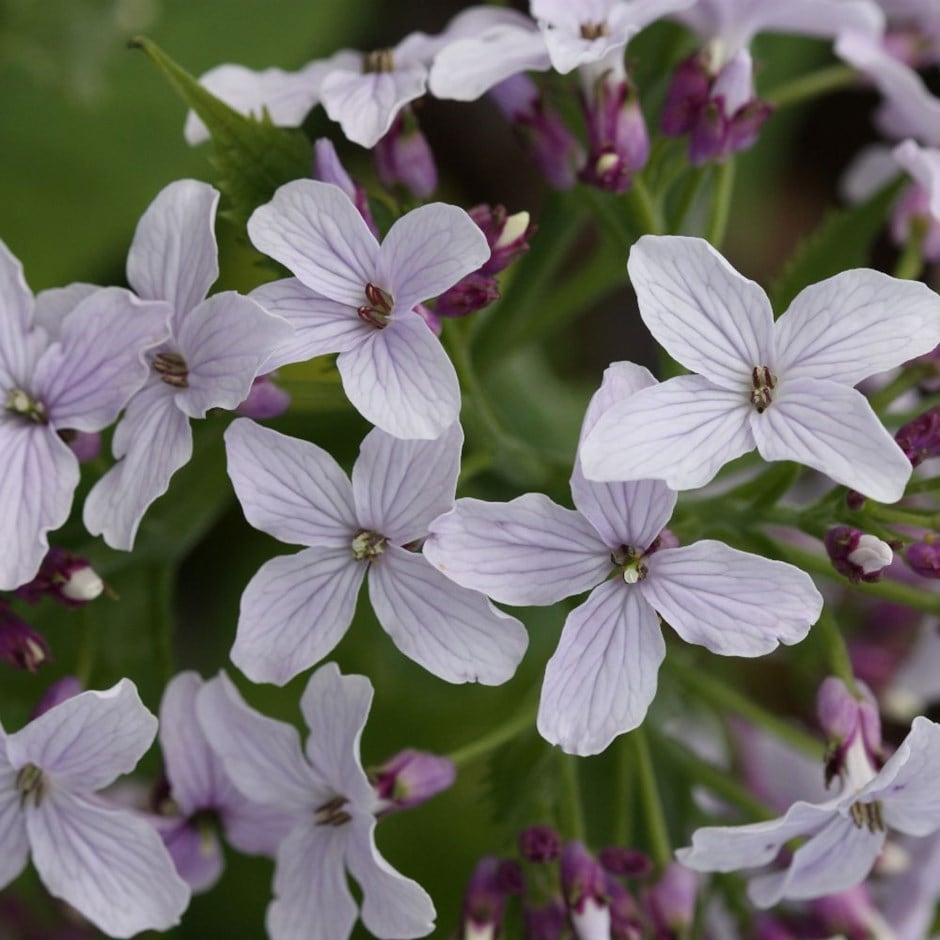
Buy perennial honesty Lunaria rediviva
Plants will self-seed in optimum conditions. Noteworthy Characteristics Lunaria rediviva , commonly called perennial honesty, is a clump-forming, herbaceous perennial that typically grows 2-3' (less frequently to 4') tall on upright-branching stems clad with finely-toothed, oblong-lanceolate, medium green leaves (to 8" long) that may be.
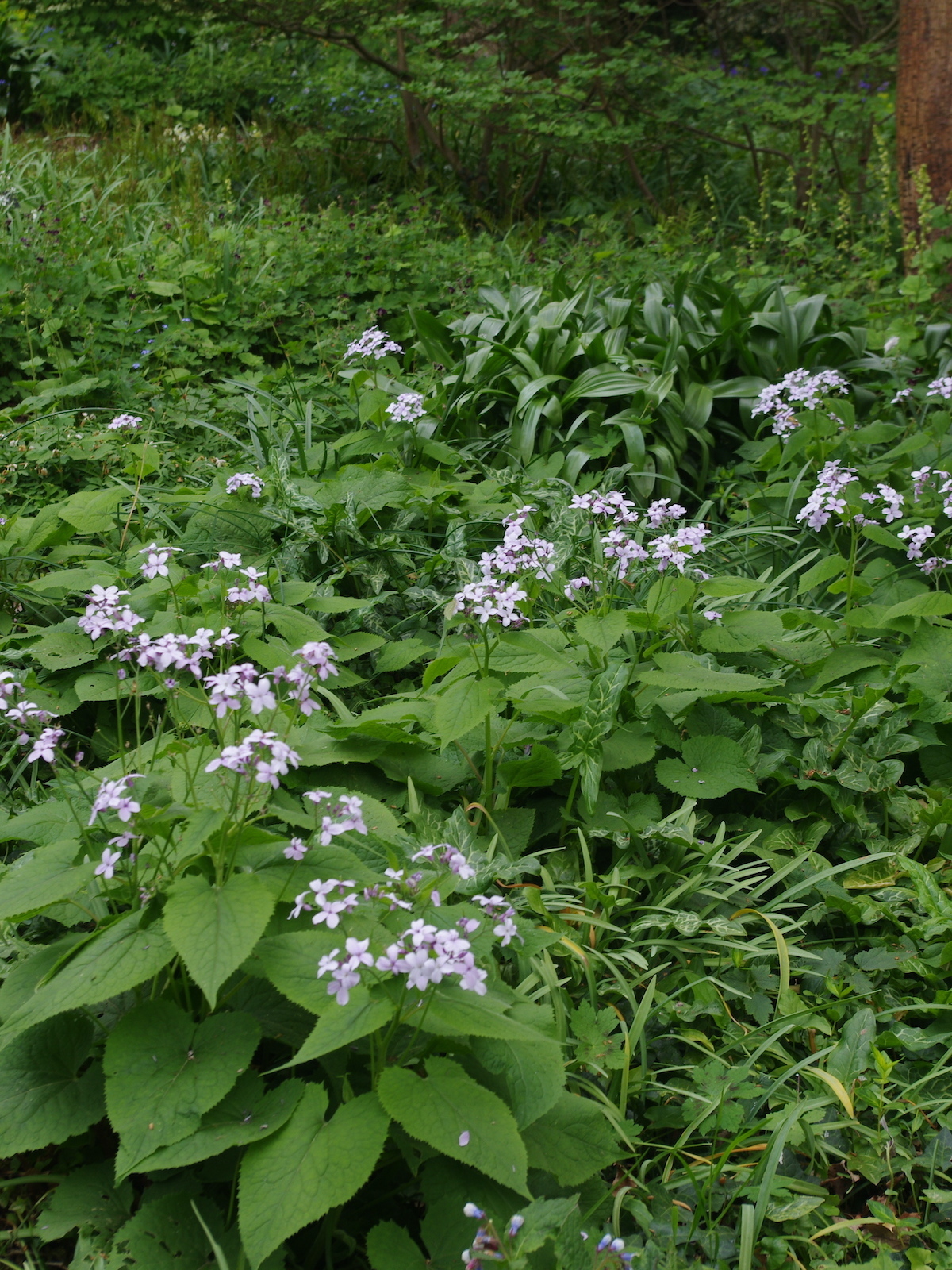
Lunaria > Lunaria rediviva The Beth Chatto Gardens
Lunaria rediviva ( Perennial Honesty ) This old-fashioned conversation piece has oval, coarse, maroon edged leaves and 4 petaled, purple or white flowers begin in late spring and continue through summer. The plant is grown primarily for its translucent, silver, round seedpods, which can be used in dried arrangements. This tough plant prefers.
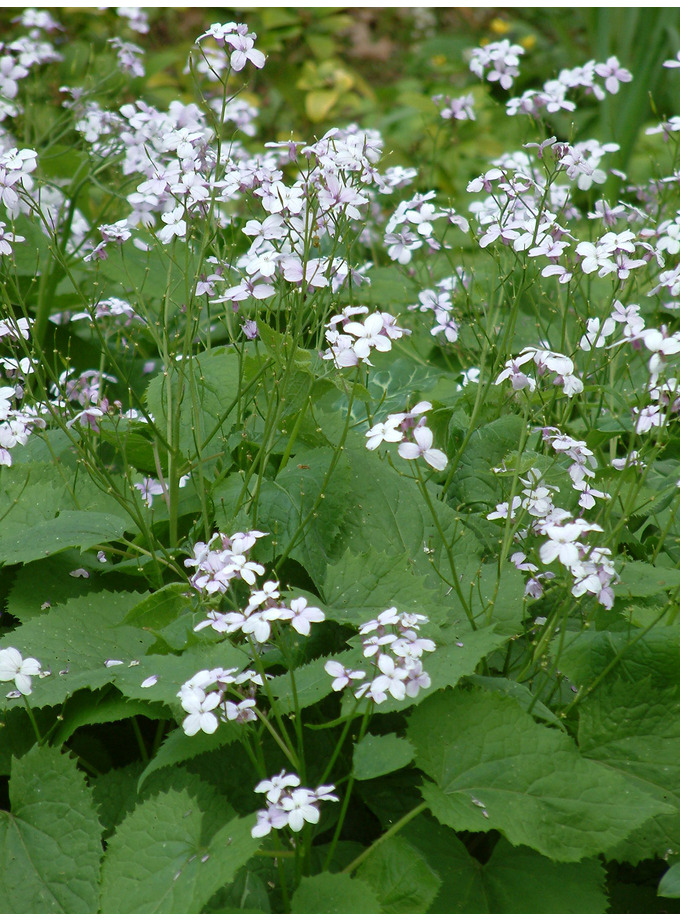
Lunaria > Lunaria rediviva The Beth Chatto Gardens
Description. Lunaria rediviva is a broadleaf deciduous perennial with green foliage and lavender flowers in spring and summer. It can grow 1 FT - 2 FT - wide, 2 FT - 3 FT - tall. Attractive to bees and butterflies. To grow well, it prefers sun - mostly shade and regular water. Grows best in well-drained and average soil.
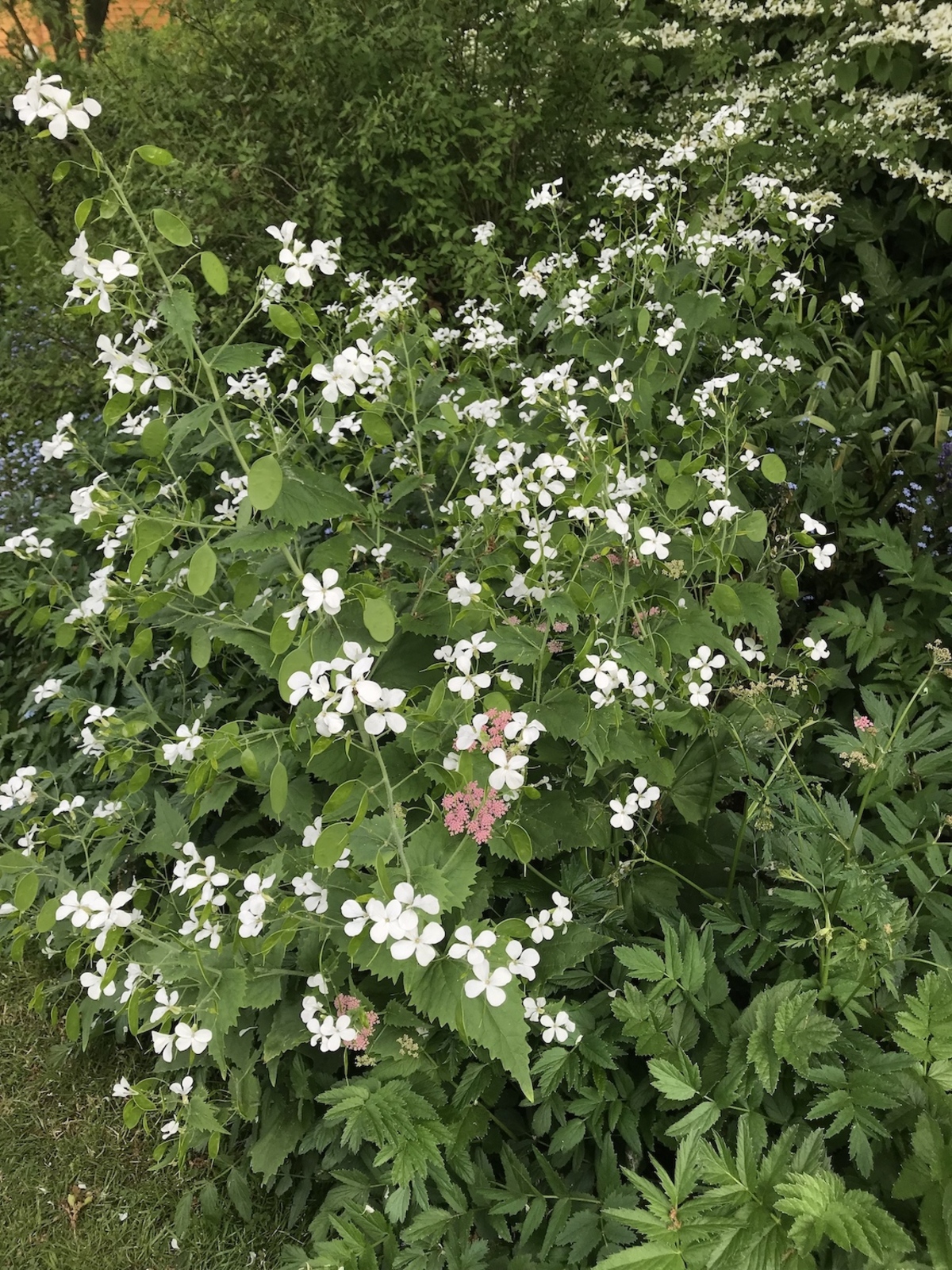
Lunaria > Lunaria rediviva The Beth Chatto Gardens
Lunaria rediviva, known as perennial honesty, is a species of plant in the cabbage family Brassicaceae. This hairy-stemmed herbaceous perennial is found throughout Europe. It often grows in damp woods on lime substrates. Growing up to 1 m tall, it has large, pointed oval leaves with marked serrations. Clusters of fragrant, pale pink flowers are borne in spring, followed by translucent oval.
Gardening With Grace Plant of the Week Lunaria rediviva
Lunaria plants have a long taproot and do not transplant well, so they're almost always propagated and grown from seed. Sow the harvested seeds outdoors in spring as soon as you can work the ground, covering them lightly with soil and water. Space seeds about 15-18 inches apart. Germination takes about 2 weeks.

FileVaste Judaspenning plant Lunaria rediviva.jpg Wikipedia
Names, synonyms, distribution, images and descriptions of all the plants in the world. International Plant Names Index. Nomenclatural data for the scientific names of vascular plants. Tree of Life Explorer.. Lunaria rediviva L. First published in Sp. Pl.: 653 (1753) This species is accepted The native range of this species is Europe..

Lunaria rediviva
Honesty plants are quite hard to transplant due to their long taproots. The best way to plant them is to sprinkle seeds on the ground and cover them with a very small amount of soil. Trim seedlings back to every 15 to 18 inches to provide adequate air circulation and room for root growth between plants.
Gardening With Grace Plant of the Week Lunaria rediviva
Lunaria rediviva, known as perennial honesty, is a species of plant in the cabbage family Brassicaceae. This hairy-stemmed herbaceous perennial is found throughout Europe. It often grows in damp woods on lime substrates. Growing up to 1 m (3.3 ft) tall, it has large, pointed oval leaves with marked serrations.
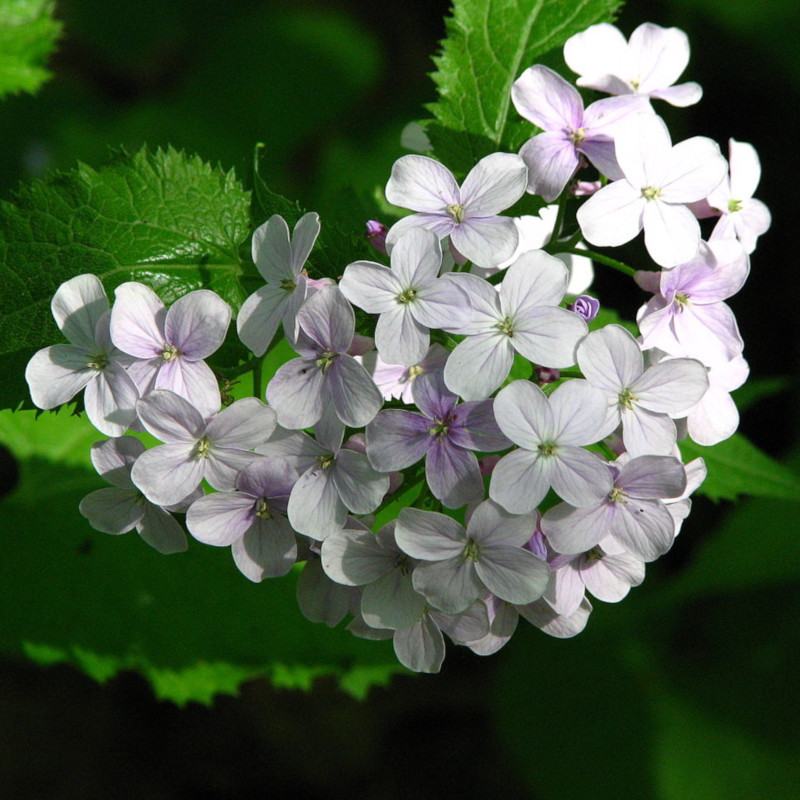
Perennial honesty (Lunaria rediviva) seeds
Perennial honesty, Lunaria rediviva, is a beautiful herbaceous perennial admired for its long season of interest.In late spring it produces a profusion of scented, lilac-white flowers that are popular with bees and butterflies. The flowers persist well into summer and are followed by pretty, papery seedheads that last into autumn and even winter.
Gardening With Grace Plant of the Week Lunaria rediviva
perennial honesty. L. rediviva is an herbaceous perennial to 90cm tall, with toothed, triangular-heart-shaped leaves and panicles of fragrant, lilac-white flowers 2.5cm wide in spring and early summer, followed by elliptical seedheads useful for drying.
Gardening With Grace Plant of the Week Lunaria rediviva
Lunaria rediviva (Perennial Honesty) is a clump-forming, herbaceous perennial with finely toothed, heart-shaped leaves, 8 in. long (20 cm), that may be tinged with dark red. In spring and early summer, showy panicles of delicately scented, lilac-white flowers, 1 in. across (2.5 cm), are on display. They are followed by translucent, elliptical, flat seed pods that are highly prized in dried.

Lunaria rediviva (Perennial Honesty) BBC Gardeners World Magazine
Join our friendly community that shares tips and ideas for gardens, along with seeds and plants. Browse pictures and read growth / cultivation information about Perennial Honesty (Lunaria rediviva) supplied by member gardeners in the PlantFiles database at Dave's Garden.

Lunaria rediviva
How to grow Lunaria rediviva: Soil and Light Requirements: Lunaria rediviva, commonly known as Perennial Honesty, thrives in well-drained soil that is rich in organic matter. Plant it in a sunny location or provide light shade, especially during hot weather. Morning sun exposure is beneficial for optimal growth and flowering.

Free Images blossom, flower, herb, botany, flora, perennial, wildflower, brassicaceae
Lunaria Plant Growing and Care Guide Common Names: Honesty, Money Plant, Silver Dollars, Bolbonac, Moonwort, Satin flower, Moon plant, Dollar plant, Money-in-both-pockets, Moneywort. Life Cycle: Hardy perennial.Hardy biennial grown as a hardy annual by gardeners. Height: 30 to 40 inches (75 to 100 cm). Native: Europe. Growing Region: Annuals: zones 3 to 9.